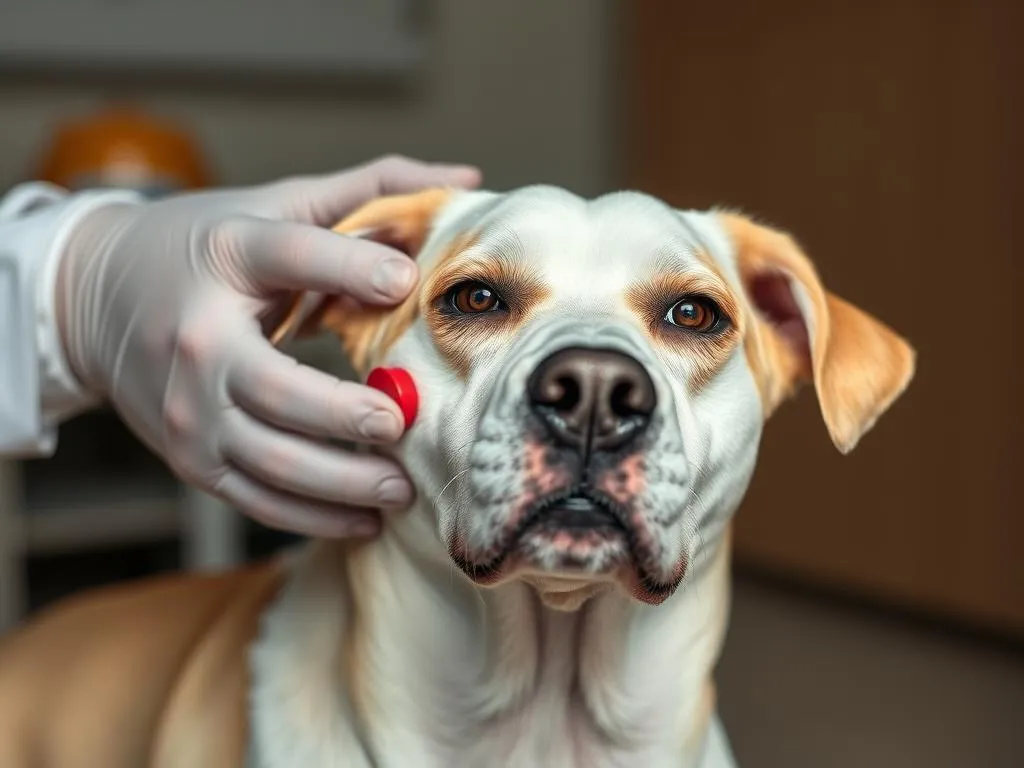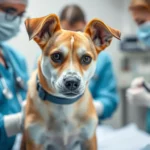
Introduction
Pet owners often experience a whirlwind of emotions when their beloved furry companions receive vaccinations. While vaccines are essential for maintaining a dog’s health, it’s common to have concerns about potential side effects. One of the more alarming reactions can be the formation of a lump on dog after vaccination. Understanding the reasons behind this occurrence, what it means, and when to seek veterinary advice can help ease your worries and ensure your pet remains healthy.
Understanding Vaccination in Dogs
What Are Vaccines?
Vaccines are biological preparations that provide acquired immunity to a particular infectious disease. They stimulate the dog’s immune system to recognize and fight off specific pathogens. Common types of vaccines for dogs include:
- Core Vaccines: These are essential for all dogs, such as Rabies, Distemper, Parvovirus, and Adenovirus.
- Non-Core Vaccines: These are optional and depend on the dog’s lifestyle or environment, such as Bordetella (kennel cough) and Lyme disease vaccines.
Why Vaccination is Important
Vaccination is crucial for several reasons. It protects individual dogs from serious diseases and contributes to herd immunity, which helps safeguard those animals that cannot be vaccinated due to health issues. Vaccines can drastically reduce the prevalence of infectious diseases in the dog population, thereby enhancing public health as well.
Common Vaccinations and Their Schedules
Most veterinarians recommend a specific vaccination schedule that includes both core and non-core vaccines. Typical timelines are as follows:
- Puppies: Begin vaccinations at 6-8 weeks, with boosters every 3-4 weeks until 16 weeks.
- Adults: Core vaccines are usually administered every 1-3 years, while non-core vaccines may vary based on risk factors.
Possible Side Effects of Vaccination
Common Reactions
Most dogs experience mild side effects after vaccinations. These can include:
- Lethargy
- Mild fever
- Reduced appetite
- Soreness at the injection site
These reactions typically resolve within a few days. It’s important to monitor your dog during this time and ensure that they are comfortable.
Uncommon but Serious Reactions
In rare cases, dogs may have severe reactions to vaccines, such as anaphylaxis. Signs of a serious reaction include:
- Swelling of the face or muzzle
- Difficulty breathing
- Vomiting or diarrhea
- Collapse
If you observe any of these symptoms, it is crucial to seek veterinary help immediately.
Understanding Lumps After Vaccination
What Causes Lumps at the Injection Site?
A lump on dog after vaccination can occur due to localized inflammation at the injection site. This reaction is typically harmless and indicates that the dog’s immune system is responding to the vaccine. The body often treats vaccines as foreign substances, leading to temporary swelling.
Types of Lumps
Lumps can vary in their nature and significance. Here are some common types:
- Benign Lumps: These include localized swelling or firm lumps that are generally harmless and may resolve on their own.
- Abscesses: This is a collection of pus that can develop if bacteria enter the injection site. Abscesses may require veterinary treatment.
- Granulomas: These are small clusters of inflammatory cells that can form in response to the vaccine. They are typically benign.
Timeline for Lumps
Most lumps formed at the injection site should diminish within a few days to a couple of weeks. If a lump persists beyond two weeks, continues to grow, or becomes painful, it’s important to consult a veterinarian.
When to Consult a Veterinarian
Signs That Require Immediate Attention
Certain symptoms warrant immediate veterinary care, including:
- Excessive swelling at the injection site
- Signs of difficulty breathing or severe lethargy
- Persistent vomiting or diarrhea
- A lump that increases in size after a few days
Prompt action can be vital in addressing any potential complications.
Follow-Up Questions to Ask Your Vet
When visiting the veterinarian regarding a lump, consider asking:
- What type of lump should I expect after vaccination?
- How long should I monitor the lump before seeking further treatment?
- Are there any specific signs I should watch for?
Providing detailed information about your dog’s health and the lump can assist the veterinarian in making a proper diagnosis.
Managing Lumps at Home
Observation and Monitoring
Monitoring the lump is essential. Here are tips for pet owners:
- Check the lump regularly for changes in size, shape, or tenderness.
- Note any additional symptoms, such as fever or changes in appetite.
- Keep your dog comfortable and ensure they are not irritating the area.
Home Remedies and Care
For minor discomfort, you can consider the following:
- Apply a cold compress to the lump to reduce swelling.
- Ensure your dog has a quiet space to rest and recover.
Avoid using any home treatments without consulting a veterinarian first, especially if the lump appears concerning.
Preventive Measures and Best Practices
Choosing the Right Vaccination Schedule
Working with a veterinarian to establish a tailored vaccination plan is critical. Consider your dog’s lifestyle, health history, and risk factors when selecting vaccines. Regular check-ups can help ensure your pet receives appropriate vaccinations at the right intervals.
Preparing for Vaccination Day
To ease your dog’s stress on vaccination day, consider these tips:
- Bring familiar items, such as a favorite toy or blanket.
- Avoid feeding your dog a large meal right before the appointment.
- Remain calm and reassuring; your dog can sense your emotions.
Conclusion
Understanding what to expect after your dog is vaccinated, especially concerning a lump on dog after vaccination, can alleviate many concerns. While mild reactions are common and typically not a cause for alarm, being vigilant and knowing when to seek veterinary care is vital. By staying informed and proactive about your dog’s health, you can ensure they remain happy and healthy long after their vaccinations. Remember, communication with your veterinarian is key to ensuring your pet’s well-being.









